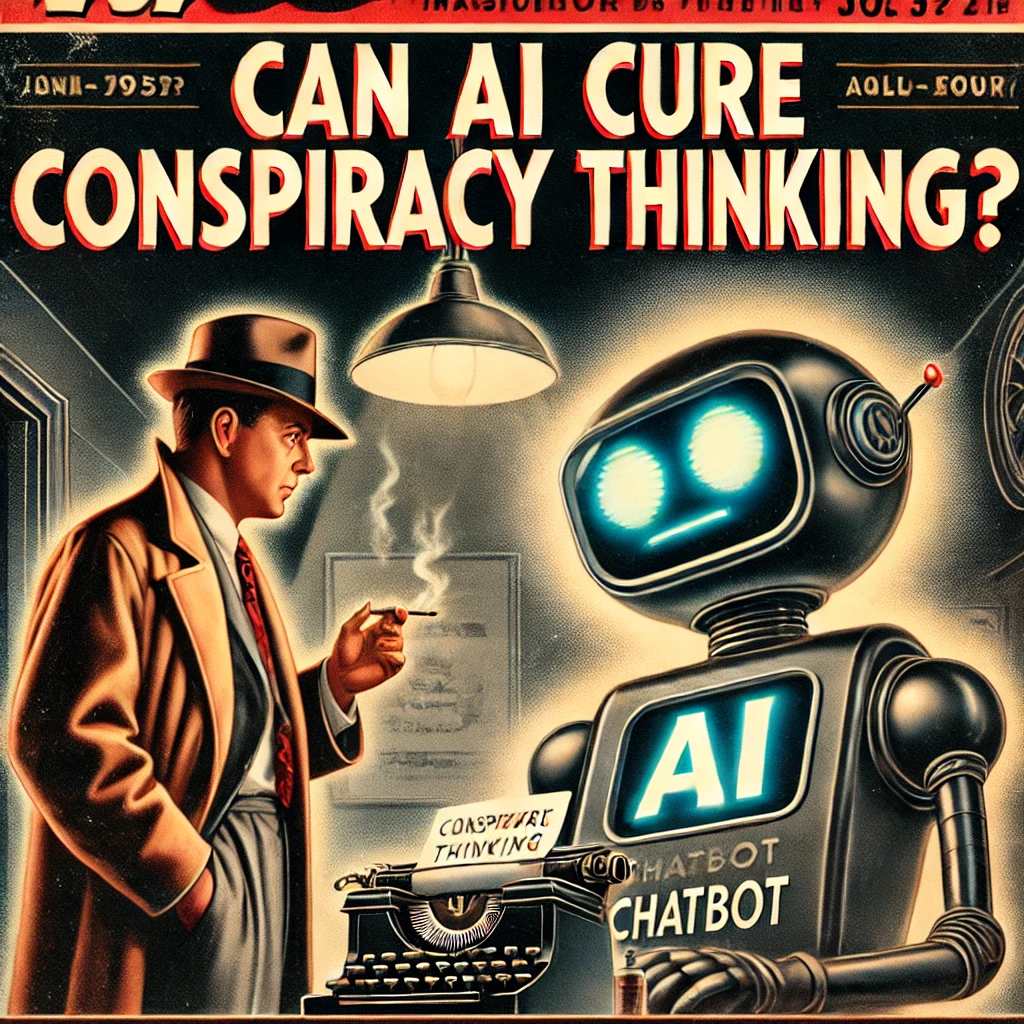
In the early 19th century, a peculiar theory took hold of the public imagination: the belief in the Great Moon Hoax. A series of articles published in The Sun, a New York newspaper, claimed that astronomers had discovered an advanced civilisation on the Moon, complete with winged humanoids and lush landscapes. Though the story was later debunked as a fabrication, it captivated audiences and demonstrated how readily people could be swayed by sensationalised misinformation. More than a century later, conspiracy theories have evolved, but their psychological grip remains just as strong. Now, scientists are exploring whether artificial intelligence might provide a way to counteract these deeply held beliefs.
A recent study published in Science called Durably reducing conspiracy beliefs through dialogues with AI by Thomas H. Costello, Gordon Pennycook, and David G. Rand has raised the tantalising prospect that AI-driven dialogues may be capable of reducing belief in conspiracy theories over time.
Their reassuring conclusion: "Conspiratorial rabbit holes may indeed have an exit."
The study, conducted by a team of behavioral scientists and AI researchers, suggests that structured conversations with an AI chatbot—designed to engage with conspiracy believers in a personalised, non-confrontational manner—can weaken the hold of these theories on individuals' minds, with effects persisting months after the interaction.
The Experiment: Can a Machine Change Minds?
The study employed an advanced AI chatbot programmed with an arsenal of counterarguments, each carefully crafted to address specific conspiracy beliefs. Participants engaged in extended dialogues with the chatbot, which responded to their concerns with tailored, evidence-based refutations, aiming not to dismiss their beliefs outright but to introduce doubt through rational discourse.
The results were striking. Across multiple sessions, participants who engaged in dialogue with the AI exhibited a significant decline in their adherence to conspiracy theories, an effect that held steady months after their initial interactions. The AI didn't just refute their beliefs—it reshaped the way they processed new information. The study’s authors suggest that the key was the AI’s ability to interact with individuals without the emotional barriers that often emerge in human-to-human debates. No judgment. No exasperation. Just the facts ma'am, patiently repeated.
The Science of Persuasion: Why This Works
Psychologists have long understood that direct confrontation often backfires when dealing with deeply held beliefs, especially those tied to conspiracy thinking. The “backfire effect” occurs when people double down on false beliefs in response to corrective information, perceiving it as an attack on their worldview rather than a neutral clarification. The AI chatbot, however, sidesteps this reaction by engaging users in a more Socratic manner—leading them toward inconsistencies in their own logic rather than outright dismissing their views.
Additionally, the personalisation of responses played a crucial role. Unlike generic fact-checking websites or public service announcements, the AI adapted its arguments to each user’s specific concerns, mirroring the persuasive tactics used by misinformation peddlers themselves. The difference? The AI was armed with verifiable facts.
The Skeptic’s View: AI as a Cure, or Just Another Tool?
The implications of this research are as promising as they are unsettling. If AI can be programmed to deconstruct conspiracy beliefs, could it not just as easily be designed to reinforce them? Algorithmic persuasion is a double-edged sword—one that could be wielded by those seeking to spread disinformation just as effectively as those seeking to combat it.
Moreover, belief systems are deeply intertwined with identity and social belonging. Can a machine truly replace human influence in reshaping worldviews, or is this simply another technological fix to a fundamentally human problem? The study acknowledges these limitations and calls for further research into the scalability of AI-driven interventions. If AI can assist in combating misinformation, then ensuring its ethical implementation is as critical as the technology itself.
The Truth is Out There—But Will We Listen?
As researchers continue investigating the divide between evidence and belief, the study provides an intriguing glimpse into the potential of AI as a tool for countering conspiracy theories. Whether artificial intelligence can truly bridge the gap between misinformation and truth remains an open question. However, one thing is certain: as long as misinformation persists, the search for effective interventions will continue.
Want to learn more? My sources are your sources, (except for the confidential ones): Science, History.com, Britannica, Science.org, BBC, Library of Congress, Smithsonian, Science.org, Wikipedia.
